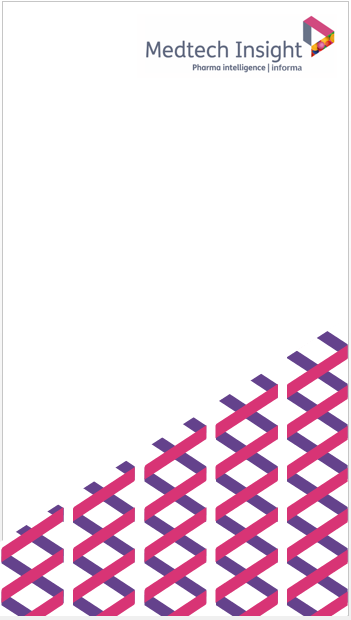Report Detail

Purchase Price: $4,750.00
U.S. Markets for Percutaneous Transluminal Coronary Angioplasty and Coronary Stenting Products
Affecting more than 15.8 million people in the United States (U.S.), coronary heart disease (CHD) is the single largest cause of death in the country and also is the leading cause of premature and permanent disability in the labor force. Coronary heart disease encompasses a group of disorders—atherosclerosis, angina pectoris, and myocardial infarction (MI)—that cause a reduction in the flow of blood through the vessels of the heart, and is responsible for more than 50% of all cardiovascular events in men and women younger than age 75 in the U.S., and for 1 out of every 5 deaths. It is expected that the direct and indirect costs of CHD in the U.S. will total $151.6 billion in 2007.
Healthcare professionals have identified a number of key factors that are recognized as contributing to an increased risk of CHD. The major risk factors include unhealthy lifestyle habits such as being physical inactive, consuming a diet high in fats and low in fruits and vegetables, drinking alcohol, and smoking; medical conditions such as diabetes, elevated blood cholesterol, high blood pressure, and obesity; and having a personal or family history of heart disease.
Strategies that a physician may choose for the medical management of a patient with CHD include lifestyle changes such as diet modification or smoking cessation, and/or the use of any of a number of drugs, which may be prescribed to help prevent the formation of blood clots in the coronary arteries, lower blood pressure, or reduce blood lipid levels. For cases in which medical management alone does not prove satisfactory or when a patient is suffering a life-threatening event such as acute myocardial infarction (AMI), available device-based treatments are open-heart coronary artery bypass graft (CABG) surgery and less-invasive percutaneous coronary intervention (PCI) techniques that include percutaneous transluminal coronary angioplasty (PTCA) and coronary stenting.
The selection of therapeutic modality for CHD patients depends on many factors such as the location and nature of the coronary artery lesion or lesions, disease severity, the overall medical condition of the patient (which may preclude surgical treatment), the presence of adverse reactions or other contraindications to drug therapy, prior treatment history, and individual preference.
Medical management usually is the treatment of choice for CHD patients with less-severe disease, and lifestyle changes such as diet and exercise programs have long been a mainstay of CHD management. Patient compliance with the latter often is an issue, however, and patients in higher-risk categories or with significant clinical symptoms, or those who do not show an adequate reduction in cholesterol levels as a result of lifestyle changes, also may require drug treatment to significantly alter the course of the disease.
Coronary artery bypass graft surgery—which involves bypassing blockages in the coronary arteries using artificial vessels or vessels taken from the patient’s own body (such as an internal mammary artery [IMA] or saphenous vein graft [SVG])—was first carried out in the 1960s and became one of the most commonly performed procedures to resolve coronary artery blockages. Today, CABG surgery may be performed conventionally, using an open-chest technique, or minimally invasively, using a less traumatic approach. The number of CABG procedures performed increased throughout the 1970s and the 1990s, stabilized during the mid-1990s, and then began to decline as PCI techniques became more popular. Increasingly, CABG surgery is reserved for patients with highly complex and advanced disease for whom the use of PTCA and stenting would be cumbersome and/or fail to completely restore blood flow to all ischemic regions of the heart.
Percutaneous coronary interventions, specifically PTCA and coronary stenting, represent the device-based treatment of choice for patients with advanced CHD that cannot be adequately managed via medical therapy. Percutaneous transluminal coronary angioplasty was the first transcatheter approach to be introduced clinically, becoming widely used by the early 1980s; however, a major drawback to PTCA, particularly for patients with complex CHD, was restenosis of the treated vessels within 6 months to 1 year following the procedure. Attempts to minimize restenosis resulted in the introduction of coronary stents in 1994, when large-scale clinical trials conducted in the U.S. and Europe demonstrated a reduction in vessel restenosis with the implantation of coronary stents.
Initially adopted in Europe, stenting has revolutionized catheter-based interventions for CHD worldwide. Stents—tiny balloon-expandable or self-expanding scaffolds—are placed within narrowed vessels to maintain/restore vessel patency. Not only are these devices effective in reducing the rate of restenosis and other complications associated with PTCA, they also have proved useful as a direct interventional therapy (e.g., for treating short, first-time lesions in large arteries and for opening occluded bypass grafts). Advancements in stenting technologies have continued to reduce restenosis rates following PCI procedures, allowing the modality to be used in an ever larger percentage of patients who in the past would have been candidates for highly invasive CABG surgery. In the U.S., coronary stenting now is the primary interventional therapeutic modality for the treatment of CHD, although there recently has been a stall in the trend toward the increased use of drug-eluting stents (DESs) due to reports of an uncommon, but serious, adverse event called late stent thrombosis (LST), in which blood clot formation occurs within a stent placed 30 or more days prior to the occlusive event. Despite LST-related safety concerns, it is expected that coronary stenting will remain the dominant treatment modality for the non-medical management of advanced CHD throughout the forecast period covered by this report.
